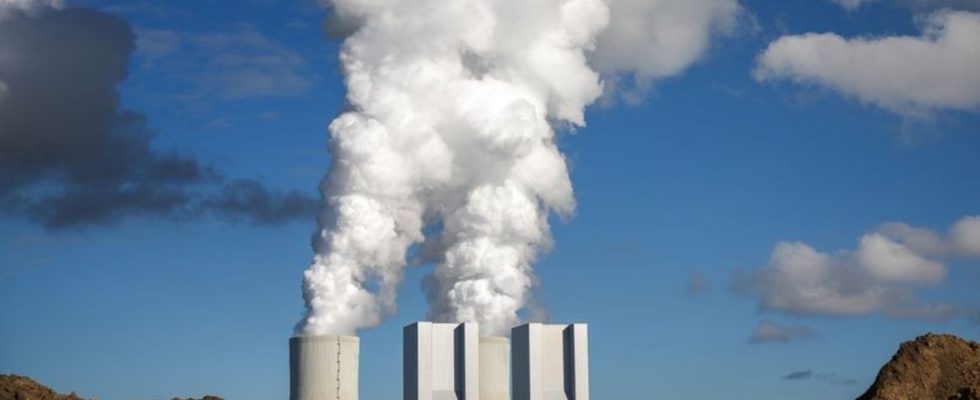study
Too little progress in climate protection worldwide
The Lippendorf lignite-fired power plant. The power plant burns brown coal from surrounding opencast mines to generate electricity and heat. photo
© Jan Woitas/dpa
The world is not doing enough to combat global warming. According to a new study, there is a lack of speed in the energy, industry, transport and the restructuring of agriculture and forestry.
“The report shows that governments, taken together, are taking baby steps to avert the climate crisis,” said UN climate chief Simon Stiell on Tuesday. The upcoming world climate conference in Dubai must be a “turning point”. “Governments must not only agree on stronger climate protection measures, but also show exactly how they want to implement them.”
State of Climate Action report
There is a lack of speed in the energy, industry, transport and restructuring of agriculture and forestry sectors, among other things. Only the global sales figures for electric cars are in line with the goal of limiting global warming to 1.5 degrees compared to pre-industrial times, according to the “State of Climate Action” report published today by the World Resources Institute (WRI), the NewClimate Institute and as well as Climate Analytics and the Bezos Earth Fund shows.
In the study, the 1.5 degree target agreed in Paris in 2015 is specifically translated into specifications for individual sectors. The results are bleak, as study author Sophie Boehm from WRI said. “Despite decades of dire warnings and wake-up calls, our politicians have failed to mobilize anything close to climate action at the pace and scale required.” Of the 42 indicators examined, only the sale of electric cars is on track to achieve the milestones calculated for 2030.
Here are some examples from the report
The share of solar and wind energy has increased by an average of 14 percent annually in recent years. But 24 percent would be necessary to get to 1.5 degrees by 2030. According to the study, the pace of phasing out coal would have to increase sevenfold. Converted, this means that around 240 coal-fired power plants would have to be shut down every year by 2030. Forest destruction: From 2021 to 2022, the deforested area increased from 5.4 to 5.8 million hectares, which is roughly equivalent to the area of Croatia. Climate-damaging subsidies: Defiance Despite promises to the contrary, state subsidies for oil, gas and coal almost doubled from 2020 to 2021 – also because of the energy crisis in the wake of Russia’s war of aggression on Ukraine.
Claire Fyson from Climate Analytics said it was absurd to continue investing heavily in gas and coal power as the climate crisis escalates. At the UN climate conference in Dubai in December, all governments around the world would have to agree on a fair and rapid exit from oil, gas and coal.
Evaluation of all previous climate goals
The United Nations Climate Change Secretariat has evaluated all climate targets submitted by September 25 of this year. This is intended to make it clear how far the world is from the path to the 1.5 degree target. The following conclusions were drawn:
Even if all of these goals were implemented, the global emissions emitted in 2030 would only be two percent below the 2019 level. This means that the maximum value of global emissions would still be measured in this decade – but for the climate targets agreed in Paris much too late. According to the Intergovernmental Panel on Climate Change, in order to stop global warming at 1.5 degrees as desired, emissions in 2030 would have to be 43 percent lower than in 2019. Compared to 2010, the climate-damaging emissions in 2030 would still be 8, according to the calculation. 8 percent higher. This forecast has only improved slightly since last year.
The fact that states often fail to implement their own climate goals as desired is not even taken into account in this analysis.

